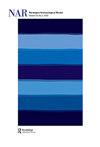An Overlooked Frontier? Scenes from Development-led Archaeology Today
IF 0.8
3区 历史学
0 ARCHAEOLOGY
引用次数: 1
Abstract
It is with great interest, that I have read Gavin Lucas’ and Christopher Witmore’s thoughtprovoking paper on the commitment to theory in contemporary archaeology. Particularly, as the central question – what is theory in archaeology and how does it work – resonates with thoughts coming out of my own recent explorations of the conditions and processes of knowledge formation in development-led archaeology (Beck 2019, 2021, in press). Today, development-led archaeology is in a situation where increasing demands of societal relevance and decreasing understanding among developers and politicians simultaneously challenge the existing practice and create a need for rethinking how things are done (e.g. Statsrevisorerne 2018, Milek 2018, Barreiro et al. 2018, Knoop et al. 2021). At the same time, I find that the challenges development-led archaeology meets today serve as an excellent illustration of the conflict between ‘weak’ and ‘strong’ theorization as described by Lucas and Witmore. Therefore, I will follow their call and join the conversation by asking, if development-led archaeology could be a hitherto overlooked frontier for rethinking theory in archaeology? My studies show that knowledge formation within development-led archaeology is not directed by any specific theoretical paradigm in the traditional sense but instead refers to a messy, complex, undefined – and sometimes even contradictory – mix of ideas including elements from all of the major archaeological paradigms. Discussing theory in development-led archaeology is therefore not a matter of discussing one theoretical paradigm against another. Instead, the formation of knowledge can be said to take place in a tension between two different kinds of theorization: the practice of fieldwork and the structure of heritage management. The practice of fieldwork includes the processes of uncovering, exploring, interpreting and documenting the archaeological material as a source for theorization (Edgeworth 2012, Marila 2017, Sørensen 2018). Even if the actual practices can vary, these processes can be recognized in all kinds of archaeological fieldwork. What differentiates fieldwork in development-led archaeology from other archaeological fieldwork, though, is that the site has been picked out by modern development, and not as the result of a long and thorough research process. The object of research, thus, is most often unknown or at least only provisionally identified. This circumstance, I will argue, gives the fieldwork in development-led archaeology a particular sensitivity towards the unpredicted and possible, which necessarily puts the investigated object at the centre. Following the object, moreover, means that methods and strategies need to be flexible and ready to adapt if demanded by the object and can as such not always be predefined (Andersson et al. 2010,被忽视的前沿?《今日以发展为主导的考古学》中的场景
我怀着极大的兴趣阅读了加文·卢卡斯和克里斯托弗·威特莫尔关于当代考古学理论承诺的发人深省的论文。特别是,作为核心问题——考古学中的理论是什么以及它是如何运作的——与我最近对发展主导的考古学中知识形成的条件和过程的探索产生了共鸣(Beck 20192021,出版)。如今,以发展为主导的考古学正处于这样一种情况:对社会相关性的需求不断增加,开发商和政治家之间的理解不断减少,同时挑战了现有的实践,并产生了重新思考如何做事的需求(例如,Statsrevisorne 2018,Milek 2018,Barreiro等人2018,Knoop等人2021)。与此同时,我发现发展主导的考古学今天所面临的挑战,很好地说明了卢卡斯和威特莫尔所描述的“弱”和“强”理论之间的冲突。因此,我将听从他们的号召,加入对话,问:发展主导的考古学是否可以成为迄今为止被忽视的重新思考考古学理论的前沿?我的研究表明,以发展为导向的考古学中的知识形成不是由传统意义上的任何特定理论范式指导的,而是指一种混乱、复杂、不明确——有时甚至是矛盾的——思想的混合,包括所有主要考古范式的元素。因此,在以发展为主导的考古学中讨论理论并不是讨论一种理论范式与另一种理论模式的问题。相反,知识的形成可以说是在两种不同理论之间的紧张关系中发生的:实地调查的实践和遗产管理的结构。实地调查的实践包括发掘、探索、解释和记录考古材料的过程,作为理论来源(Edgeworth 2012,Marila 2017,Sørensen 2018)。即使实际实践可能有所不同,这些过程也可以在各种考古实地调查中得到认可。然而,以发展为导向的考古学中的田野调查与其他考古田野调查的区别在于,该遗址是由现代发展挑选出来的,而不是漫长而彻底的研究过程的结果。因此,研究对象往往是未知的,或者至少只是暂时确定的。我认为,这种情况使以发展为导向的考古学中的田野调查对不可预测和可能的事物具有特别的敏感性,这必然会将研究对象置于中心。此外,遵循对象意味着方法和策略需要灵活,并在对象要求时随时准备适应,因此并不总是预定义的(Andersson等人,2010,
本文章由计算机程序翻译,如有差异,请以英文原文为准。
求助全文
约1分钟内获得全文
求助全文
来源期刊

Norwegian Archaeological Review
ARCHAEOLOGY-
CiteScore
2.10
自引率
0.00%
发文量
13
期刊介绍:
Norwegian Archaeological Review published since 1968, aims to be an interface between archaeological research in the Nordic countries and global archaeological trends, a meeting ground for current discussion of theoretical and methodical problems on an international scientific level. The main focus is on the European area, but discussions based upon results from other parts of the world are also welcomed. The comments of specialists, along with the author"s reply, are given as an addendum to selected articles. The Journal is also receptive to uninvited opinions and comments on a wider scope of archaeological themes, e.g. articles in Norwegian Archaeological Review or other journals, monographies, conferences.
 求助内容:
求助内容: 应助结果提醒方式:
应助结果提醒方式:


